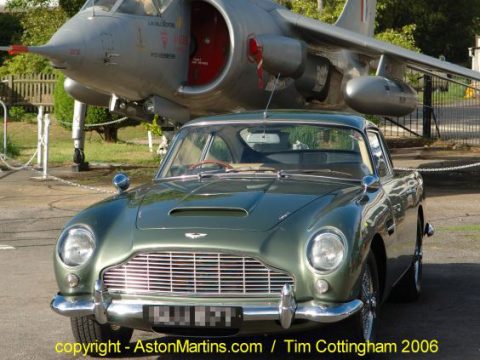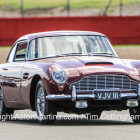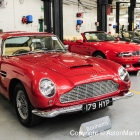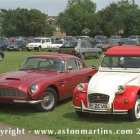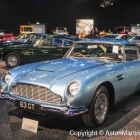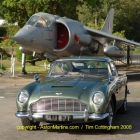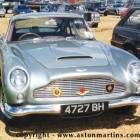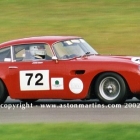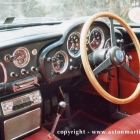The DB4 Vantage is not just an enhanced engine as it also has the faired-in headlights from the DB4 GT with the addition of a chrome rim. DB4 saloons with the Special Series engine fitted as a cost option and regular headlights are not normally classified as DB4 Vantage. The saloons and Vantages have distinct chassis number sequences.
The series 4 was replaced by the series 5 in September 1962; the body was lengthened by 9 cm which gave more rear leg room and a bigger boot but also allowed a higher roofline. Some sources will claim that the series 5 has a longer wheelbase but this is not the case at all. A majority of series 5 DB4’s were built to full Vantage specification. In almost all respects the final series of DB4 Vantage had become the DB5 – a car it is often easily confused with. Visually, the series 5 DB4 Vantage and DB5 only differ in minor detail. Most DB4’s have only one fuel filler on the left rear pillar (DB5’s have two), DB4’s have no model badges (many DB5’s have wing and boot badges), DB4’s have the four speed David Brown gearbox (most DB5’s have the German ZF 5 speed box).
The occasional DB4 Vantage even goes racing. This car was photographed (Red number 72 below) during the 1999 season during an AMOC race meeting at Donnington Park. Early DB4’s are favourites to go racing as towards the end of it’s production life, the DB4 gained weight. But remember, the Vantage was a more powerful car too.
Many of the series 5 Vantage also featured the GT instrument panel (but not the one pictured below) Also visible is a window winding handle, a feature which saw its last service on the DB4, DB5’s and later cars had electric windows fitted as standard.
Pictured below features a DB4 Vantage in Dubonnet Rosso together with a 2CV6 Dolly (indeed it’s my car), If nothing else, it illustrates the breath of the classic car world. The picture was taken in 1995 in a park in Newport Pagnell being used as parking for the factory open day, a very busy day in the town.



